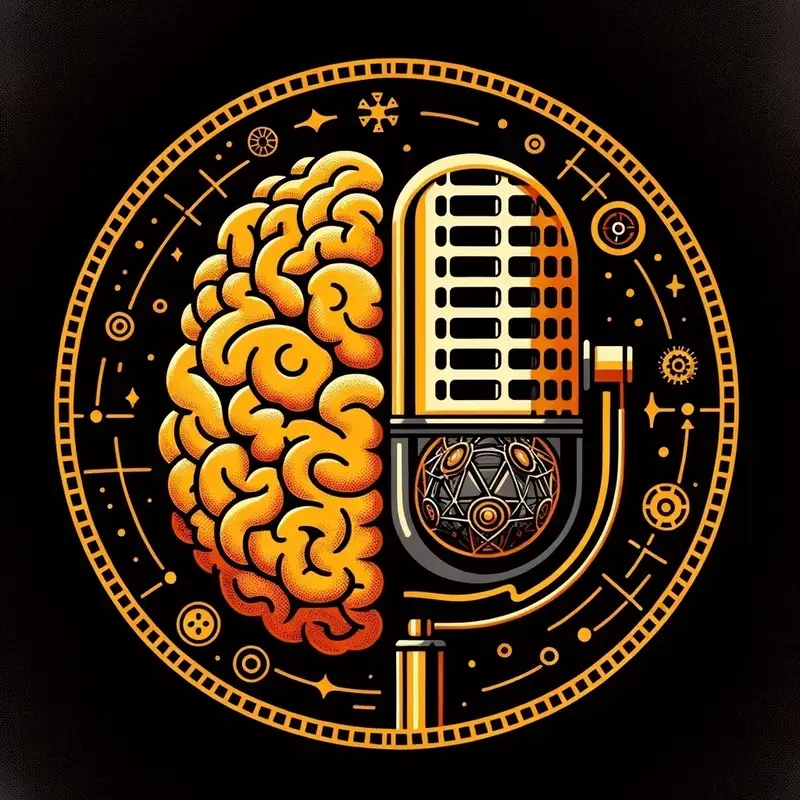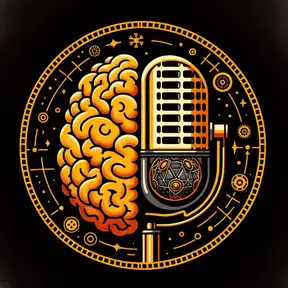From Entropy to Action: Hope, Tactics, and Knowing When to Step Up (E5 of 5 in Series)
Welcome back to PsyberSpace. I'm your host, Leslie Poston. If you're new here, this is the show where I help you understand your world by exploring how psychology, media, culture, and technology shape the way we think, feel, work, and live. This week, we've been moving through a five part series about what I've been calling the Entropy Age. In the first episode, we talked about emotional entropy, existential anxiety, ontological insecurity, and anticipatory grief.
Leslie Poston:In the second, we looked at system decay under late stage capitalism. In the third, we focused on epistemic entropy and how truth stops feeling solid. In the fourth, we talked about power hoarding and the psychology of leaders and movements that are comfortable thriving in chaos. Today, we're going a little deeper into what action can look like from nervous system care all the way to collective resistance. This final episode is about having reasonable hope and real options, even in the face of systemic entropy.
Leslie Poston:Hope that doesn't deny how bad things are but still asks, What can I do myself? And What can we do together? Some of those answers are small and quiet. Some are silly. Some of them involve people in the streets, people blocking harm, and people standing between systemic harm and targeted neighbors.
Leslie Poston:I also want to revisit tactical whimsy and other ideas like it, but place it where it belongs, as one tool in a larger kit. Certainly tactical whimsy can support you and your community, as demonstrated by the people protesting in cities like Portland. But sometimes conditions call for going beyond your comfort zone to a more direct physical presence, somewhat like we're seeing in Chicago and North Carolina this week if you've been following the news. Part of emotional maturity in a time like this is learning to feel out the difference. By the end of the episode, my aim is that you have language for that range and a way to think about which responses fit which moment.
Leslie Poston:Let's start with hope itself. Psychologist C. R. Snyder described hope as a mix of three things: having goals, seeing possible pathways, and feeling some agency to move along those pathways. That's different from vague optimism.
Leslie Poston:Optimism can just be a mood, but hope in this sense is a process. We talked about that in more depth in our episode on the psychology of hope. Right now, optimism can feel dishonest. You can see many signs that things are not going well. Reasonable hope doesn't ask you to look away.
Leslie Poston:It asks you to look for any place where you still have some influence, however small, and any path forward that's a little better than just sitting still. Self determination theory from Edward Decky and Richard Ryan adds another piece to the puzzle. They found that people function better when three needs are supported: autonomy, competence, and relatedness. Autonomy is the sense that you have some say in what's happening. Competence is the sense that you can do something that matters.
Leslie Poston:And relatedness is the sense that you are connected to others and not just a lone atom floating in space. Late stage capitalism and authoritarian drift work against those needs. They centralize decisions, hollow out public life, push people toward conformity, and reward people who hoard power and money. No wonder so many people feel stuck, ineffective, and isolated. Reasonable hope looks for ways to reclaim even small amounts of autonomy, competence, and relatedness.
Leslie Poston:That might be mutual aid, neighborhood projects, community defense, labor organizing, or even direct support for people targeted by larger systems of entropic power. It might be policy work, legal work, or strategic communications. Maybe it's even more intimate, as simple as taking care of one another so that people have the capacity to show up when it matters. Once you look at hope through this lens, it stops being a feeling you either have or do not have and becomes a skill that you can build with other people. Before we talk about escalated action, it's worth pausing to talk about systemic entropy's impact on the body and what we can do to keep ourselves regulated in turbulent times.
Leslie Poston:Polyvagal theory associated with Steven Porges gives us one helpful map. It says that our nervous systems shift between states based on cues of safety and danger. In a calm, safe state, you can think, connect, and plan. In fight or flight, you're wired for more quick action. And in shutdown, you go numb.
Leslie Poston:An entropy age throws many danger cues at you consistently. Economic news, climate reports, police violence, anti immigrant raids, fascist rhetoric, public health failures, and more. If you're paying any amount of attention, your body is noticing. Many people live in a long running mix of activation and collapse. Research on the social cure led by researchers like S.
Leslie Poston:Alexander Haslam, Jolanda Jettin, and Nyla Branskull shows that group belonging and shared identity can buffer some of this strain. Being part of a group with regular contact and a shared purpose tends to help people cope better with stress and stay healthier over time. This is where small, steady rituals matter. A regular walk with a friend, a weekly potluck, or a group that meets to plan, but also to debrief and care for each other. A mutual aid crew that always has time for a cup of tea or a beer after a hard action.
Leslie Poston:These things aren't just self care. They're nervous system infrastructure for resistance. Tactical whimsy fits here as one thing that bridges real life action and the idea of the social cure. Adding play and humor to these rituals helps your nervous system loosen its grip on constant threat. This could be in the form of themed dinners, silly names for your working group, shared memes and a serious chat for planning, wearing inflatable costumes to a protest, or having an ongoing in joke that reminds you that you still have some joy and agency left.
Leslie Poston:If you want to show up for more direct action, you need these foundations. Bodies that never have any sense of safety burn out or freeze quickly. Bodies that find ways to feel safe with others can return to engagement after stress and be ready to fight again in the future. Let's talk a little bit more about tactical whimsy. It's been in the news quite a bit this year.
Leslie Poston:Tactical whimsy is the deliberate use of small, playful acts that support real world goals. It's serious play. The point is not to make light of harm. The point is to keep people human, creative, and connected while they face harm together. On the low intensity end, this might look like naming a mutual aid group's weekly planning call something that makes you smile instead of just meeting.
Leslie Poston:Turning your supply drop into a small block gathering where local kids chalk the sidewalk and adults can talk logistics. Using art, costumes, dance, or music in your protests and vigils, not as a gimmick but as a way to hold attention and create shared emotional memory. On a more direct action level, tactical whimsy can show up in the way people confront oppressive actors. Think of creative signage, chants that use humor without erasing danger, or carefully staged visual actions that highlight both the absurdity and the cruelty of a policy. These approaches can reduce fear for participants.
Leslie Poston:They draw public attention, and they make it harder for authorities to frame protesters as faceless threats. Research on positive emotions from Fredriksen suggests that moments of joy, amusement, and interest can broaden and build your ability to see your options. Under constant fear, your focus narrows, which is what an entropic system in decay wants. Under brief, genuine positive emotion, your field of view and your sense of options widens. Tactical whimsy uses that on purpose.
Leslie Poston:The important thing is that tactical whimsy is optional and situational. Some communities are not in a place where play feels safe or appropriate. Some actions are too urgent or too dangerous to carry much whimsy. You don't have to force it. It's just one tool in your kit, not a moral requirement.
Leslie Poston:The question underlying all of this is when is it time to move beyond individual and group nervous system care and small scale acts of tactical joy and whimsy and into more direct, potentially physical or monetary collective action? There's no single formula, but we can talk about some patterns that research and history both point to. One clue is when systemic harm shifts from abstract risk to concrete events. For example, when untrained immigration vigilantes are detaining your neighbors, when police are targeting protesters, when lawmakers have passed or are about to pass laws that strip rights from specific groups, when excessive evictions or harmful sweeps are happening in your town, at that point, supportive thoughts are just not enough. People on the sharp end of entropic systems need bodies, resources, and protection.
Leslie Poston:Another clue is when institutional channels have been tried and ignored. If communities have petitioned, testified, called their government officials at all levels, met with representatives, and used official complaint processes, and the response has been dismissal or retaliation, you start to see the limits of inside methods. Research on collective efficacy shows that people's belief in their shared power grows when they act together and see visible results, even small ones. Protests, boycotts, strikes, coordinated walkouts, and a physical presence at key sites can shift that sense of efficacy. There are real risks here, and those risks are not the same for everyone.
Leslie Poston:People who are undocumented, Black, disabled, trans, or otherwise targeted by the system or by fascist groups face higher stakes. Solid science on protest and social movements, including work by Erica Chenoweth, Tressie McMillan Cotton, Robin Spencer, and others, finds that nonviolent collective action tends to be more effective over the long term and less deadly than other types of struggle. It also tends to draw on a wider base of participants. But knowing when more is appropriate means weighing the urgency of harm, the history of attempted remedies, and the risks to you and others. That includes knowing which populations are more at risk with each type of action.
Leslie Poston:Something in work of social theorists like Patricia Hill Collins can help you understand. It also means paying attention to what roles fit you. Not everyone needs to be physically on a barricade. Some people do legal observing. Some provide medical care.
Leslie Poston:Some handle communications. Some people raise funds or provide food and childcare. Every part of this is collective action. There are people right now showing up in direct and physical ways to block harm from agencies and actors that target immigrants, protesters, and other vulnerable groups. There are also people behind the scenes supporting them.
Leslie Poston:Both matter. If you find yourself feeling that twinge of this crosses a line, I can't just watch. That is worth listening to. But the next step is not run directly into danger. The next step is look for the helpers like mister Rogers said.
Leslie Poston:Find out who is already organizing around this. Learn what they need and join the collective effort. Match your role and your skills and risk level to the action already happening. As we close this series, I want to bring some of the threads together. We're all living through a time of emotional entropy, system decay, epistemic chaos, and power structures that treat many people as expendable.
Leslie Poston:All of our reactions to this are understandable. You're not alone, and you're not defective for feeling shaken, angry, or tired. Reasonable hope lives at the intersection of inner work and outer work. On the inner side, you can build small rituals, connections, and moments of tactical whimsy that support your nervous system and your sense of being part of something. On the outer side, you can join or strengthen efforts that reduce harm, share resources, and push back against authoritarian and extractive forces.
Leslie Poston:When you think about what to do next, it might help to ask: What is one small ritual I can build with others that gives all of us a bit more steadiness? What's one local effort, however modest, that moves conditions in a better direction for someone? What's one situation where I feel that I can't just watch feeling? And who is already organizing around it that I can help? What role fits my body, my skills, my schedule, and my risk level?
Leslie Poston:And you don't have to answer all of those questions today. You don't have to be part of every struggle or turn your entire life into a permanent emergency. You're allowed to have joy, art, and silliness while you fight for a better future. And in fact, those things keep you going. The entropy age is not something you chose.
Leslie Poston:How you respond to it, alone and with others, is the part that's still yours. In this fifth and final part of our Entropy series, we moved from description into response. We talked about hope as a mix of goals, pathways, and agency. We looked at basic psychological needs for autonomy, competence, and connection. And we talked about nervous system safety, small rituals, and tactical whimsy and joy as one set of tools among many.
Leslie Poston:And we talked about how to sense when more direct collective action is needed and how to find a role that fits you. If any of this helped you see your own mix of coping, caring, and acting in a new light, I hope it gives you permission to claim both rest and resistance. You are allowed to be tired and still decide to show up in whatever way you can. If this episode resonated, share it with someone you would like to build a pocket of order, joy, or resistance with. The show notes will include research and resources if you'd like to read more about the ideas we talked about today.
Leslie Poston:Thanks for listening to this Entropy series on PsyberSpace and for spending your time and attention here. If you liked this series, you can actually find the post about it on Bluestye, and any comments to that post on Bluestye will be put under these episodes. That's true of every episode in the podcast. This is your host, Leslie Poston, signing off. Remember to stay curious, and look for our next regularly scheduled episode on Monday.
Creators and Guests


